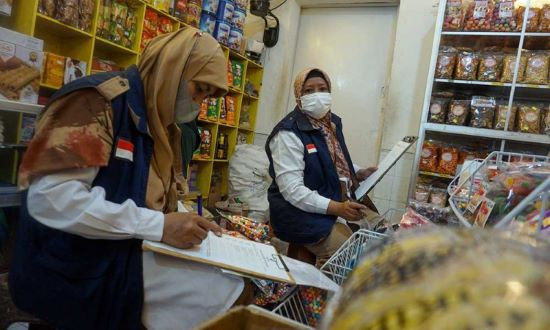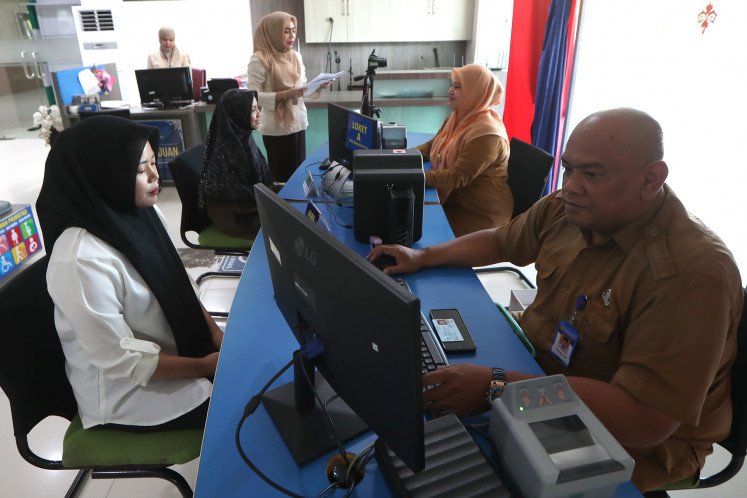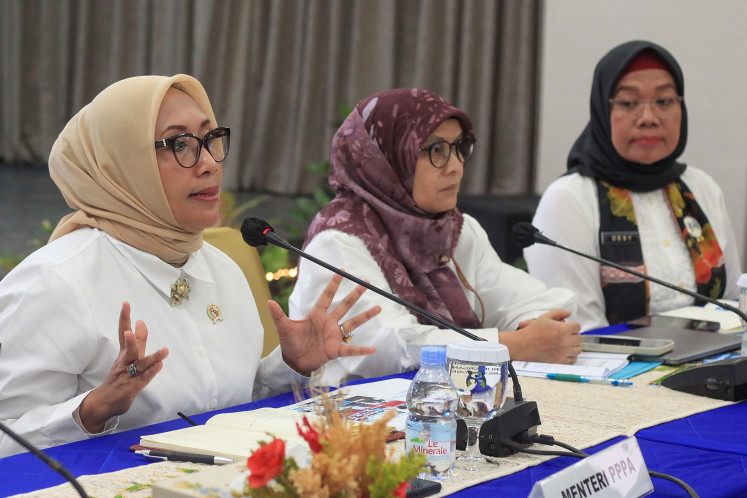Popular Reads
Top Results
Can't find what you're looking for?
View all search resultsPopular Reads
Top Results
Can't find what you're looking for?
View all search resultsGeothermal, micro hydro electric power future choices
The recent eruptions of Sinabung and Merapi have highlighted the destructive power of our volcanoes
Change text size
Gift Premium Articles
to Anyone
The recent eruptions of Sinabung and Merapi have highlighted the destructive power of our volcanoes.
These eruptions, however, have put up a smoke screen on the subterranean power of three other volcanoes, namely Sibayak, Sinabung’s neighbor in Karo district in North Sumatra; Rinjani, the highest volcano on Bali’s neighbor, Lombok; and Kelimutu with its tricolored lakes on the island of Flores.
Geologists and electrical engineers have for decades explored the best ways to utilize the power of subterranean steam reserves near the feet of those volcanos. In the case of Sibayak, the Indonesian state-owned oil and gas mining company, Pertamina, has already produced 12 megawatts of electricity through a joint venture with an Indonesian private contractor, PT Dizamatra Powerindo, owned by Djan Faridz, the licence holder of the controversial Buddha Bar in the heart of Jakarta.
The power plant was built by Dizamatra through a US$12 million joint venture with China National Electric Wire & Cable Imp/Exp Corporation. The 12-megawatt power plant was only the first step in the plan to build a 120 megawatt power plant worth $140 million, according to the MoU signed by the two companies in Beijing on Aug. 30, 2005. Meanwhile, Sibayak’s capacity will soon be doubled to 25 megawatts, to operate an Indonesian-Australian zinc and lead mining company, PT Dairi Prime Mineral (DPM) in Dairi, a neighboring district of Karo.
Unfortunately, Sibayak, as well as geothermal power plants planned for construction on the Sembalun valley on the eastern slopes of Rinjani and the Sokoria valley near Kelimutu, barely contribute to the prosperity of the rural people on their respective islands.
So, what type of power plant can improve the rural people’s prosperity? The answer is micro-hydropower plants. In North Sumatra, the Community Development Department of the Batak Karo Protestant Church, or Parpem GBKP in Indonesian, has built dozens of micro-hydro power plants in the Sibolangit range in Deli Serdang district, inspired by the Nepali model and assisted by European engineers.
Ate Keleng Foundation, the corporate body of Parpem GBKP, has classified the village-based micro-hydro power plants in to three categories. The first category includes those power plants which have increased their customers’ income, by supplying water to higher places to irrigate paddy fields and grow cash crops, and using the hydro-electric power to drive coffee and rice mills.
The second category includes the power plants which have reached break even, without profiting their customers. Finally, the third category involves the power plants that are only used to light lamps.
Maintaining those cheap hydropower resources has not been easy, as shown in the village of Bukum.
With an investment of Rp 600 million (around $66,600), Bukum’s micro-hydro power plant is generating 30 kilowatts of electricity for 200 customers, each of whom uses four power points, which consume between 100 to 150 watts of electricity.
The electricity rates are lower than those of the state-owned electric power company, PLN, at an average of Rp 1,750 for consuming 450 watts of electricity.
Actually, Bukum’s power plant can produce 70 megawatts, if the water debit flowing from the intake through the penstock can be increased by halting logging in the plant’s catchment area.
But since that has not happened, Bukum’s dynamo is only turned on at night to light the lamps. However, if the water debit is increased, the villagers cannot afford to buy new dynamo. A 30-kilowatt dynamo costs about Rp 30 million.
“What type of power plant can improve the rural people’s prosperity? The answer is micro-hydropower plants.”
After three decades of building and installing micro-hydro power plants, Ate Keleng’s Palas Karya Workshop in Sukamakmur, Deli Serdang, can produce turbines of various sizes, depending on the river’s debit and the fall from the water intake through the penstock, for an average price of Rp 22 million.
Dynamos, however, still have to be bought from the market.
Hence, Bukum’s electricity customers criticized the goverment’s Mining and Energy Service, for not providing dynamos to the people’s micro-hydro power plants, although those dynamos cost much less than dynamos used in large hydro-, steam- and geothermal power plants.
Obviously, advocates of large-scale power plants argue, that the electric power produced by each large power plant is much larger than the total electric power produced by all micro-hydro power plants assembled by Ate Keleng.
On the other hand, however, large power plants such as Sibayak are not designed for rural electrification, since they need multi-level transformers and hundreds of kilometers of power lines.
So, in conclusion, geothermal and micro-hydro power plants reflect two different development strategies.
Micro-hydro power plants, or pembangkit listrik tenaga laut (PLTL), as they are called in Karo, reflect a strategy to empower small farmers in mountaineous regions, blessed with many tributaries.
On the other hand, geothermal power plants have to be supplied by huge underground steam reserves.
Geothermal power plants such as Sibayak also need big electricity consumers to justify the millions of dollars invested, such as the large drinking water company on the foothills of Sibayak, cigarette companies in Pematang Siantar, and the lead and zinc mine in Dairi, which may drive Sibayak to double, triple or quadruple its capacity to 25, 50 or even 120 megawatts.
Nevertheless, Indonesia’s authorities have to mitigate the adverse impact of the geothermal power plants on the foothills of Sibayak, Rinjani and Kelimutu, namely the eviction of villagers to construct new underground steam wells, turbines and generators, and additional power lines.
The authorities also need to mitigate the hydrogen sulfide pollution, acid rain, electro-magnetic pollution from high voltage power lines and earthquakes triggered by the drilling of the underground steam.
The writer has been studying the impact of large-scale power plants in Indonesia for the last three decades, and teaches at Sanata Dharma University in Yogyakarta.










